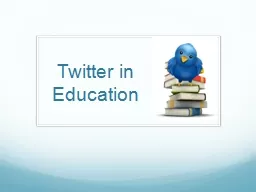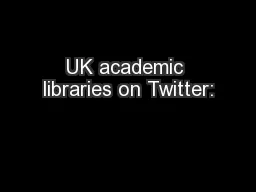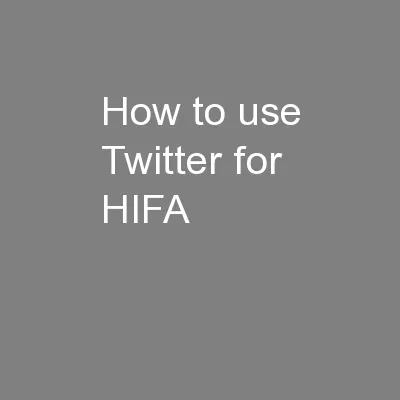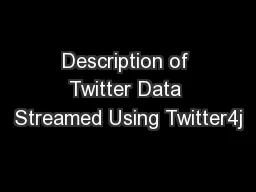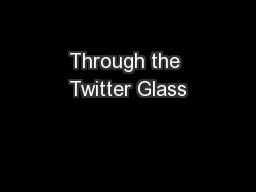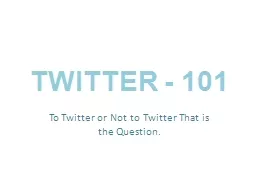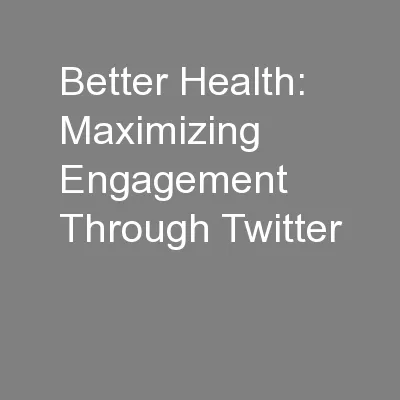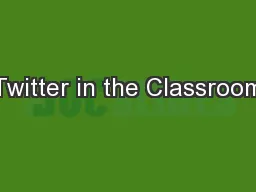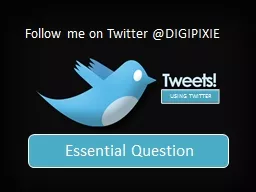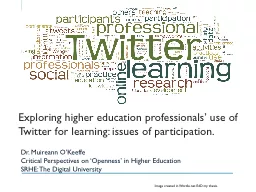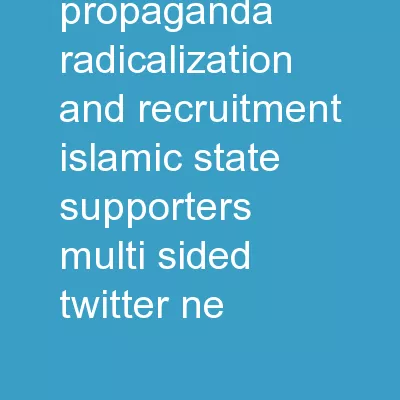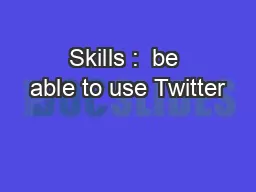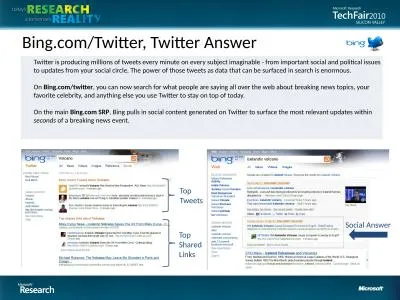PPT-Twitter in Education
Author : luanne-stotts | Published Date : 2016-08-01
Questions to the Audience How many of us own a cell phone How many of us use texting as a means of communication How many of us have a Twitter account Table of Contents
Presentation Embed Code
Download Presentation
Download Presentation The PPT/PDF document "Twitter in Education" is the property of its rightful owner. Permission is granted to download and print the materials on this website for personal, non-commercial use only, and to display it on your personal computer provided you do not modify the materials and that you retain all copyright notices contained in the materials. By downloading content from our website, you accept the terms of this agreement.
Twitter in Education: Transcript
Download Rules Of Document
"Twitter in Education"The content belongs to its owner. You may download and print it for personal use, without modification, and keep all copyright notices. By downloading, you agree to these terms.
Related Documents

